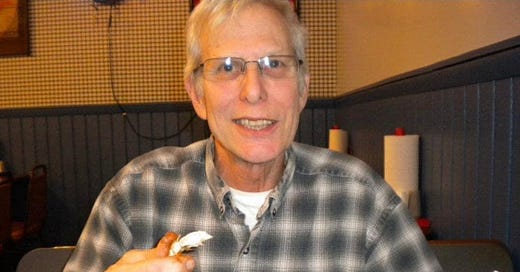April 21, 2025 – 7:35 AM Vatican City
Pope Francis is dead.
And for many, even those who may not have followed his papacy closely, the news lands like a tremor beneath the surface—silent at first, then strangely disorienting.
When a spiritual figure of this magnitude passes, especially on a day so layered with sacred meaning, something ancient stirs.
The body reacts before the mind can make sense of it.
So let’s take a breath and look deeper—not for drama, but for context. Because this moment, while it may feel unsettling, is not chaos. It is coordination.
It is part of a divine structure that has been unfolding long before today, and it will continue long after.
This is not a disruption of faith—it is a revelation of how precise faith truly is.
Pope Francis, born Jorge Mario Bergoglio to Roman Italian parents, died at 88 years old on April 21st, 2025, at exactly 7:35 AM in Vatican City.
This date is not incidental.
It marks Easter Monday in the Christian calendar—a day reserved for quiet reflection after the celebration of Christ’s resurrection.
It is not a time of endings, but a space held for what comes next. The in-between. The moment after death, before the full recognition of new life.
For Jews in the diaspora, today is also the Eighth Day of Passover—Acharon Shel Pesach.
In mystical tradition, this is the day that represents the final redemption, the Messianic future, and the feast of Moshiach—the symbolic meal of anticipation for the world’s spiritual rebirth.
The Baal Shem Tov initiated this observance not as a hope, but as a prophetic ritual: a quiet knowing that the world was always moving toward reunion with the Divine.
That’s what this moment is. It’s not a tragedy. It’s a turning. And the coordinates are exact.
Prophetically, Pope Francis has long been understood by many to be the 112th and final pope described in the Prophecy of the Popes, a 12th-century vision attributed to Saint Malachy.
The final entry doesn’t include a motto like those before it. Instead, it delivers a singular message:
“In the final persecution of the Holy Roman Church, there will reign Peter the Roman, who will feed his flock amid many tribulations; after which the city of seven hills will be destroyed, and the dreadful Judge will judge the people.”
Francis was not named Peter, but he was Roman by blood.
He reigned not through grandeur but through global tribulation.
And his very identity—both Jesuit and Pontiff—collapsed the long-held divide between the White Pope and the Black Pope, between visible authority and hidden power.
That convergence was always meant to mark the end of the old spiritual order.
From a numerological standpoint, the timing is no less exact.
The date, 4/21/2025, reduces to 7, the number of spiritual perfection and divine design.
The time of death, 7:35 AM, reduces to 6, the number of humanity and earthly governance.
Together, 7 + 6 = 13—the number that breaks false foundations so that new life can emerge.
He died at 88 years old, a master number representing infinite cycles, material fulfillment, and karmic completion.
It is a number of closure through abundance—when nothing more remains to be added or taken away.
Astrologically, the moment is also aligned.
The sun has just entered Taurus, the sign of governance, value, and embodied power.
Mercury is retrograde in Aries, calling back former structures for review and dissolution.
Saturn in Pisces is dissolving institutions.
Pluto in Aquarius is transferring power to the collective.
And all of it rests in the aftermath of March’s lunar eclipse and last year’s total solar eclipse over the Western world.
The energy is not coincidental. It is conclusive.
You don’t need to mourn this. You can if you want—but understand what you’re witnessing.
This is a shift from proxy to presence.
From vicar to direct voice. From relic to revelation.
There will be another man elected to the papacy. That is procedure. But the office will never again carry the same weight, because the prophetic line is complete.
The chair has already been vacated on a spiritual level, not just a physical one.
This is a moment of divine precision.
One that gently but firmly closes the age of religious intermediaries and reopens the space for direct relationship with God—without hierarchy, without spectacle, without fear.
It is not an end. It is a return.
Let the ground shake if it must. You are being invited not to crumble with it, but to remember who has always held the foundation steady.
There is one God. There is one author. And the script is still unfolding, exactly as written.



